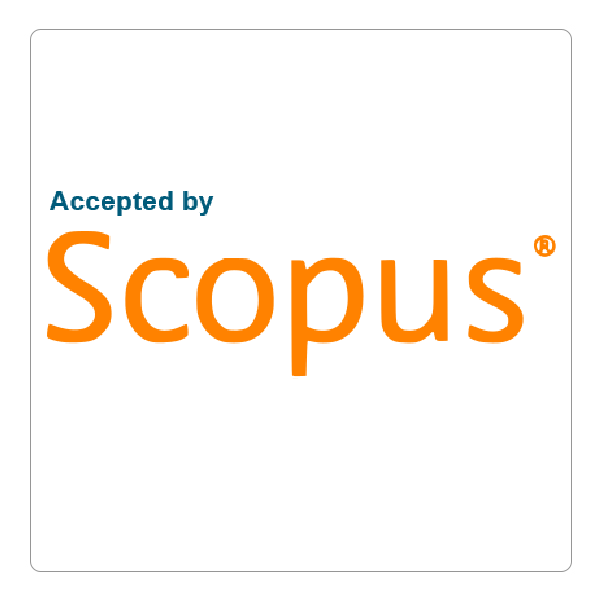How to Cite This Article
Mohammed, Mohammed Ghadban
(2023)
"Land Use Land Cover Changes Detection of Erbil City Using GIS and Remote Sensing,"
Polytechnic Journal: Vol. 13:
Iss.
1, Article 5.
DOI: https://doi.org/10.59341/2707-7799.1729
Document Type
Original Article
Abstract
Erbil City, the capital of the Kurdistan region in Iraq, witnessed significant land use land cover changes over the last two decades. These Land Cover Land Use (LULC) changes were attributed to many main social, political, climactic, and economic variables, especially after 2003 in Iraq. The use of geographic information systems and remote sensing became active tools that use public satellite images to detect LULC changes in cities. Two images of the study area of Erbil City for the years 2003 and 2020 respectively were used to analyze and get the nature and the magnitude of the LULC changes. Six LULC classes were recognized and compared for the sake of the analysis process. The LULC included barren, croplands, grasslands, open shrublands, savannas, and urban and built-up lands. Ground truth points were randomly projected and used to compare and validate the LULC class types. A confusion matrix was calculated based on the ground truth points comparison to assess the accuracy of the classes and to get the overall accuracy for the classified LULC. The LULC changes, magnitudes, and a table of “FROM-TO” changes were obtained. The maximum decrease change rate occurred in open shrublands with an average of ~ (-47%), however, the increase change rate in croplands was ~ (+17%), and for urbanizing areas was ~ (+11%). The barren and Savanna lands were proportionally small areas compared to other classes. The results showed that the overall accuracy was 90%, and the Kappa Coefficient value was 0.878.
Publication Date
9-1-2023
References
[1] ALBERTI, M., WEEKS, R., COE, S. J. P. E. & SENSING, R. 2004. URBAN LAND-COVER CHANGE ANALYSIS IN CENTRAL PUGET SOUND. 70, 1043- 1052.
[2] ANDERSON, J. R. 1976. A LAND USE AND LAND COVER CLASSIFICATION SYSTEM FOR USE WITH REMOTE SENSOR DATA, US GOVERNMENT PRINTING OFFICE.
[3] BANSOD, R., DANDEKAR, U. J. J. O. P. & PHYTOCHEMISTRY 2018. EVALUATION OF MORNA RIVER CATCHMENT WITH RS AND GIS TECHNIQUES. 7, 1945-1948.
[4] BISHOP, Y. M. M., HOLLAND, P. & FIENBERG, S. E. 1975. DISCRETE MULTIVARIATE ANALYSIS: THEORY AND PRACTICE.
[5] GILMORE, M. S., WILSON, E. H., BARRETT, N., CIVCO, D. L., PRISLOE, S., HURD, J. D. & CHADWICK, C. J. R. S. O. E. 2008. INTEGRATING MULTI-TEMPORAL SPECTRAL AND STRUCTURAL INFORMATION TO MAP WETLAND VEGETATION IN A LOWER CONNECTICUT RIVER TIDAL MARSH. 112, 4048-4060.
[6] GIRI, C., ZHU, Z. & REED, B. J. R. S. O. E. 2005. A COMPARATIVE ANALYSIS OF THE GLOBAL LAND COVER 2000 AND MODIS LAND COVER DATA SETS. 94, 123-132.
[7] GUEST, E. R. 1966. INTRODUCTION TO THE FLORA, AN ACCOUNT OF THE GEOLOGY, SOILS, CLIMATE, AND ECOLOGY OF IRAQ WITH GAZETTEER, GLOSSARY, AND BIBLIOGRAPHY. FLORA OF IRAQ, 1, 313 PP.
[8] HEROLD, M., GOLDSTEIN, N. C. & CLARKE, K. C. J. R. S. O. E. 2003. THE SPATIOTEMPORAL FORM OF URBAN GROWTH: MEASUREMENT, ANALYSIS AND MODELING. 86, 286-302.
[9] HUSSAIN, S., MUBEEN, M., AHMAD, A., AKRAM, W., HAMMAD, H. M., ALI, M., MASOOD, N., AMIN, A., FARID, H. U., SULTANA, S. R. J. E. S. & RESEARCH, P. 2020. USING GIS TOOLS TO DETECT THE LAND USE/LAND COVER CHANGES DURING FORTY YEARS IN LODHRAN DISTRICT OF PAKISTAN. 27, 39676-39692.
[10] KAFI, K., SHAFRI, H. & SHARIFF, A. AN ANALYSIS OF LULC CHANGE DETECTION USING REMOTELY SENSED DATA; A CASE STUDY OF BAUCHI CITY. IOP CONFERENCE SERIES: EARTH AND ENVIRONMENTAL SCIENCE, 2014. IOP PUBLISHING, 012056.
[11] KHWARAHM, N. R., QADER, S., ARARAT, K. & FADHIL AL-QURAISHI, A. M. 2021. PREDICTING AND MAPPING LAND COVER/LAND USE CHANGES IN ERBIL /IRAQ USING CA-MARKOV SYNERGY MODEL. EARTH SCIENCE INFORMATICS, 14, 393-406. KHWARAHM, N. R. J. E. P. 2020. MAPPING CURRENT AND POTENTIAL FUTURE DISTRIBUTIONS OF THE OAK TREE (QUERCUS AEGILOPS) IN THE KURDISTAN REGION, IRAQ. 9, 1-16.
[12] MAHMUD, A. & ACHIDE, A. J. E. R. J. 2012. ANALYSIS OF LAND USE/LAND COVER CHANGES TO MONITOR URBAN SPRAWL IN KEFFI-NIGERIA. 6, 130-135.
[13] MILESI, C., ELVIDGE, C. D., NEMANI, R. R. & RUNNING, S. W. J. R. S. O. E. 2003. ASSESSING THE IMPACT OF URBAN LAND DEVELOPMENT ON NET PRIMARY PRODUCTIVITY IN THE SOUTHEASTERN UNITED STATES. 86, 401-410.
[14] PATHMAN & AKUMAR, V. J. W. N. O. N. S. 2020. A STUDY OF LAND COVER CHANGE DETECTION IN ODDUSUDDAN DS DIVISION OF MULLAITIVU DISTRICT IN SRI LANKA BASED ON GIS AND RS TECHNOLOGY. 29, 198-211.
[15] POZZI, F. & SMALL, C. 2002. VEGETATION AND POPULATION DENSITY IN URBAN AND SUBURBAN AREAS IN THE USA. THIRD INTERNATIONAL SYMPOSIUM OF REMOTE SENSING OF URBAN AREAS, 1-6.
[16] SABR, C. J. H. S. S. R. C.-R. 2014. A STUDY ON THE URBAN FORM OF ERBIL CITY (THE CAPITAL OF KURDISTAN REGION) AS AN EXAMPLE OF HISTORICAL AND FAST GROWING CITY. 3, 325- 340.
[17] STEHMAN, S. J. P. E. & SENSING, R. 1996. ESTIMATING THE KAPPA COEFFICIENT AND ITS VARIANCE UNDER STRATIFIED RANDOM SAMPLING. 62, 401-407.
[18] SULLA-MENASHE, D. & FRIEDL, M. A. J. U. R., VA, USA 2018. USER GUIDE TO COLLECTION 6 MODIS LAND COVER (MCD12Q1 AND MCD12C1) PRODUCT. 1, 18.
[19] USGS, DIGITAL ELEVATION IN: AGENCIES, E. A. C. (ED.) 2014 ED. EARTHEXPLORAL USGS, U.S. DEPARTMENT OF GEOLOGY AND COOPERATING AGENCIES.
[20] VIVEKANANDA, G. N., SWATHI, R. & SUJITH, A. 2021B. MULTI-TEMPORAL IMAGE ANALYSIS FOR LULC CLASSIFICATION AND CHANGE DETECTION. EUROPEAN JOURNAL OF REMOTE SENSING, 54, 189-199.
[21] YUAN, F., SAWAYA, K. E., LOEFFELHOLZ, B. C. & BAUER, M. E. J. R. S. O. E. 2005. LANDCLASSIFICATION AND CHANGE ANALYSIS OF THE TWIN CITIES (MINNESOTA) METROPOLITAN AREA BY MULTITEMPO COVER.
[22] ZIMBLE, D. A., EVANS, D. L., CARLSON, G. C., PARKER, R. C., GRADO, S. C. & GERARD, P. D. J. R. S. O. E. 2003. CHARACTERIZING VERTICAL FOREST STRUCTURE USING SMALL-FOOTPRINT AIRBORNE LIDAR. 87, 171-182.











Follow us: